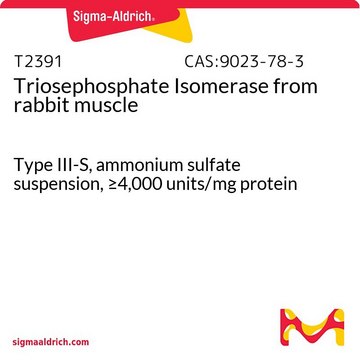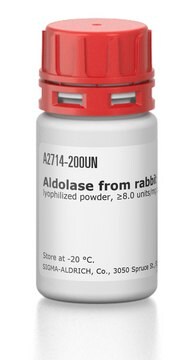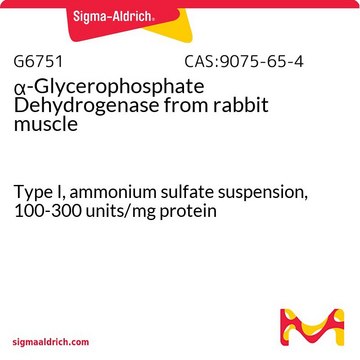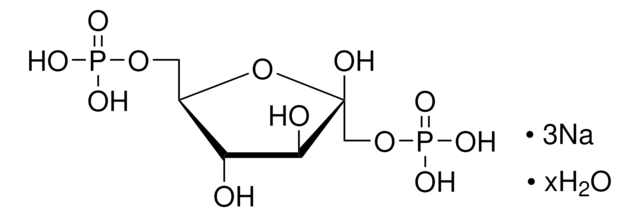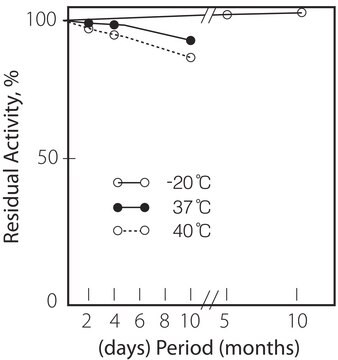Wichtige Dokumente
T6258
Triosephosphate Isomerase from rabbit muscle
Type X, lyophilized powder, ≥3,500 units/mg protein
Synonym(e):
D-Glyceraldehyde-3-phosphate ketol-isomerase, TPI
About This Item
Empfohlene Produkte
Typ
Type X
Qualitätsniveau
Form
lyophilized powder
Spezifische Aktivität
≥3,500 units/mg protein
Mol-Gew.
calculated mol wt 53.2 kDa
Zusammensetzung
Protein, 60-90% biuret
Fremdaktivität
pyruvate kinase, lactic dehydrogenase, 3-phosphoglyceric phosphokinase, phosphoglucose isomerase, α-glycerophosphate dehydrogenase, aldolase and glyceraldehyde-3-phosphate dehydrogenase ≤0.01%
Lagertemp.
−20°C
Suchen Sie nach ähnlichen Produkten? Aufrufen Leitfaden zum Produktvergleich
Allgemeine Beschreibung
Anwendung
Biochem./physiol. Wirkung
Verpackung
Einheitendefinition
Physikalische Form
Lagerklassenschlüssel
11 - Combustible Solids
WGK
WGK 3
Flammpunkt (°F)
Not applicable
Flammpunkt (°C)
Not applicable
Persönliche Schutzausrüstung
Eyeshields, Gloves, type N95 (US)
Hier finden Sie alle aktuellen Versionen:
Besitzen Sie dieses Produkt bereits?
In der Dokumentenbibliothek finden Sie die Dokumentation zu den Produkten, die Sie kürzlich erworben haben.
Kunden haben sich ebenfalls angesehen
Unser Team von Wissenschaftlern verfügt über Erfahrung in allen Forschungsbereichen einschließlich Life Science, Materialwissenschaften, chemischer Synthese, Chromatographie, Analytik und vielen mehr..
Setzen Sie sich mit dem technischen Dienst in Verbindung.

